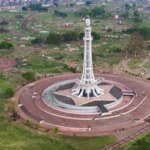Lahore: The Punjab government has introduced an AI-based system to monitor and forecast smog across the province, aiming to improve air quality and public health. The technology can predict air pollution levels and smog intensity up to four months in advance, while also tracking polluted air drifting from India.
Senior Minister Maryam Aurangzeb said the system is a significant step in Punjab’s efforts to manage air quality using advanced technology. The AI system allows authorities to plan preventive measures, alert healthcare sectors, and respond promptly to sources of pollution.
Under the initiative, industries, transport operators, and construction projects are required to meet strict emissions targets. Compliance is monitored through advanced surveillance, including drone monitoring, while offenders may face fines, sealing, or demolition of facilities. Crop residue burning is strictly prohibited, and fuel quality inspections at petrol stations are conducted regularly.
Read: Lahore, Faisalabad get real-time air quality forecast system
The Punjab Environmental Protection Agency (PEPA) has completed more than 300,000 vehicle fitness tests this year. The province currently operates around 1,100 electric buses, with plans to add 1,000 more. In addition, 41 Air Quality Monitoring Stations are active, with the target to increase the number to 100 by next year.
A dedicated Smog War Room, connected to the Punjab IT Board’s dashboard, coordinates rapid responses to pollution violations and supports real-time monitoring of industries. Mobile hospitals have also been deployed in high-smog areas to provide medical support.
Punjab has established an Environment Protection Force to monitor pollution around the clock using drones and inspection squads. The government has also launched an anti-plastic campaign to encourage public participation in environmental protection.
Officials said that these measures collectively represent a major technological and administrative effort to reduce pollution, ensure cleaner air, and improve living conditions for residents of Punjab.








